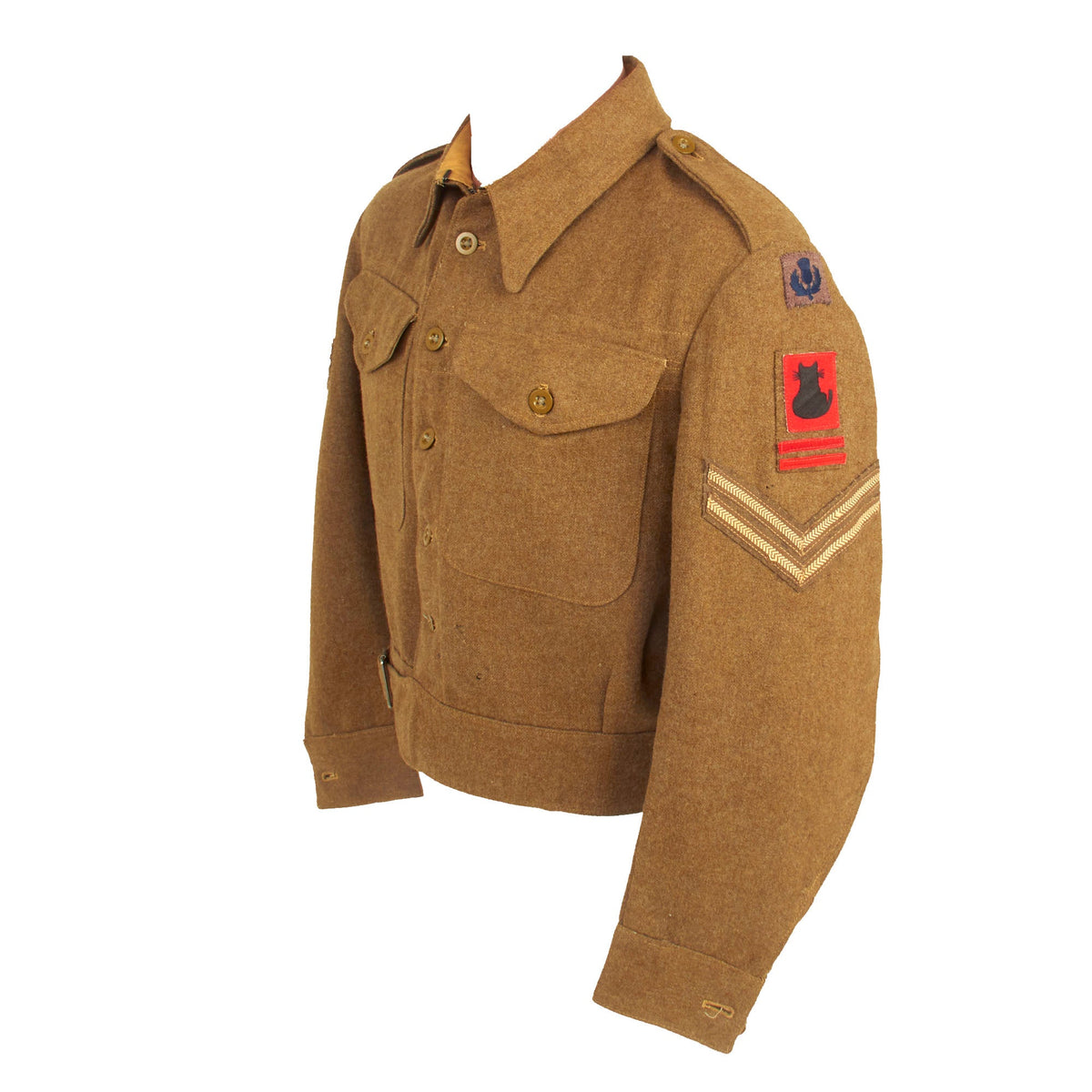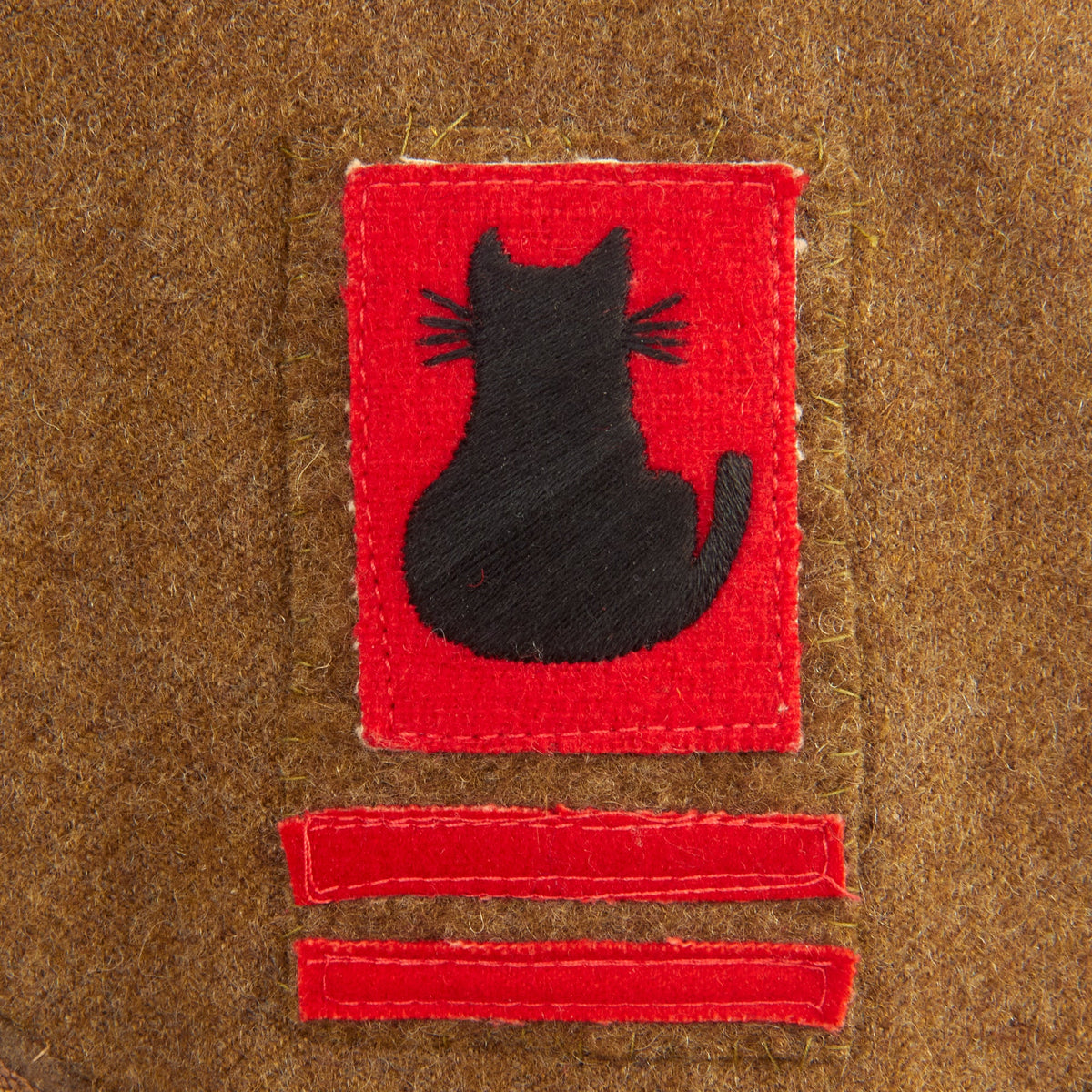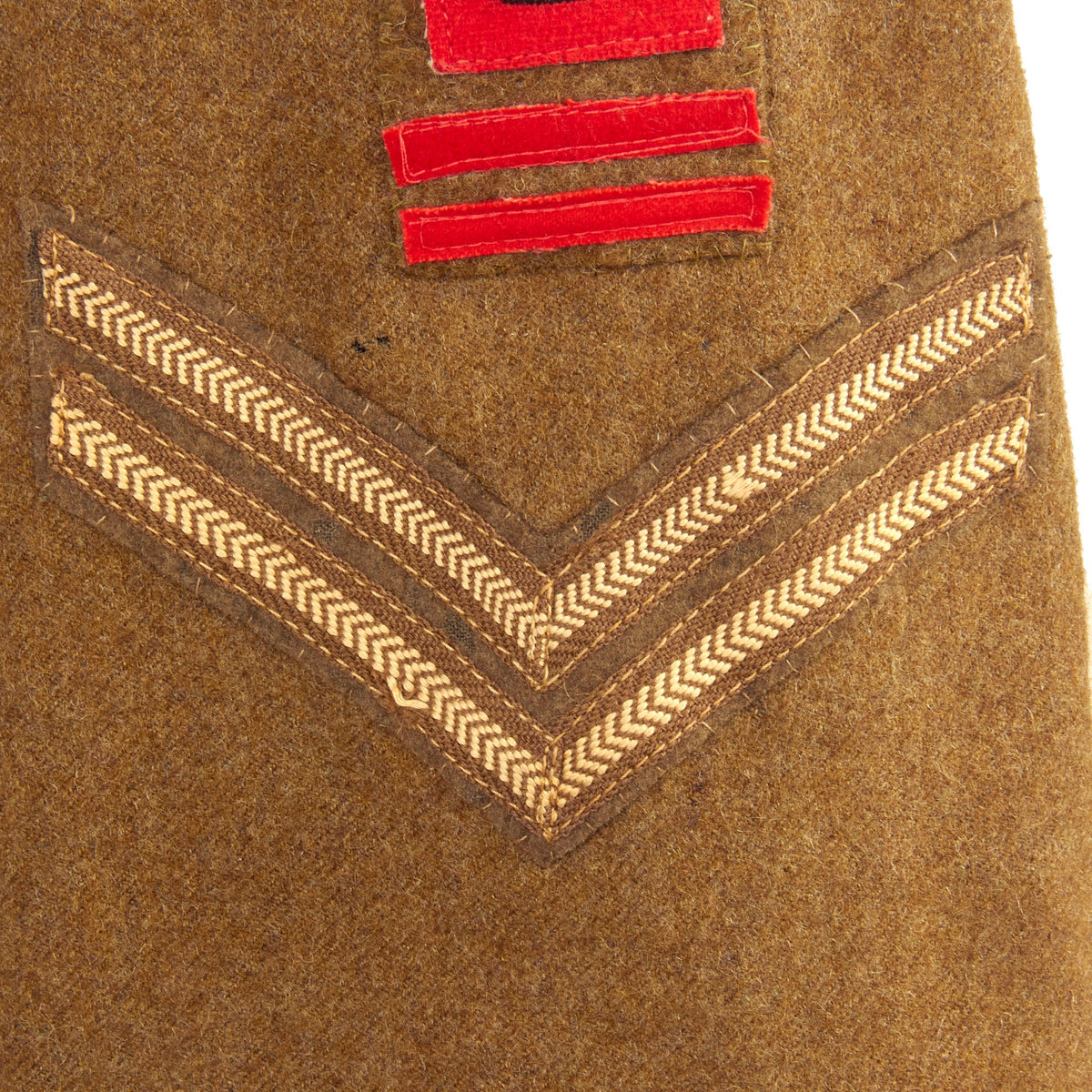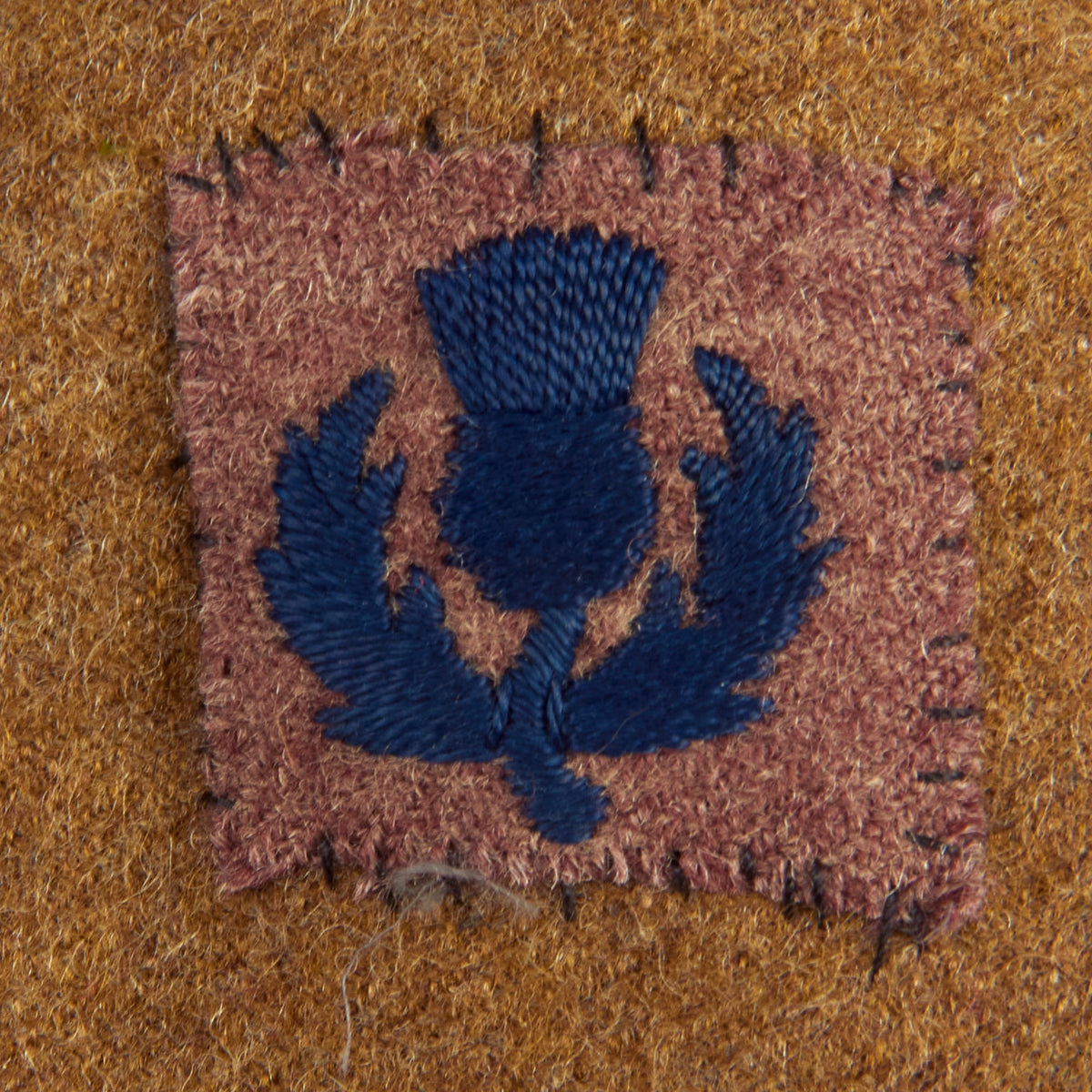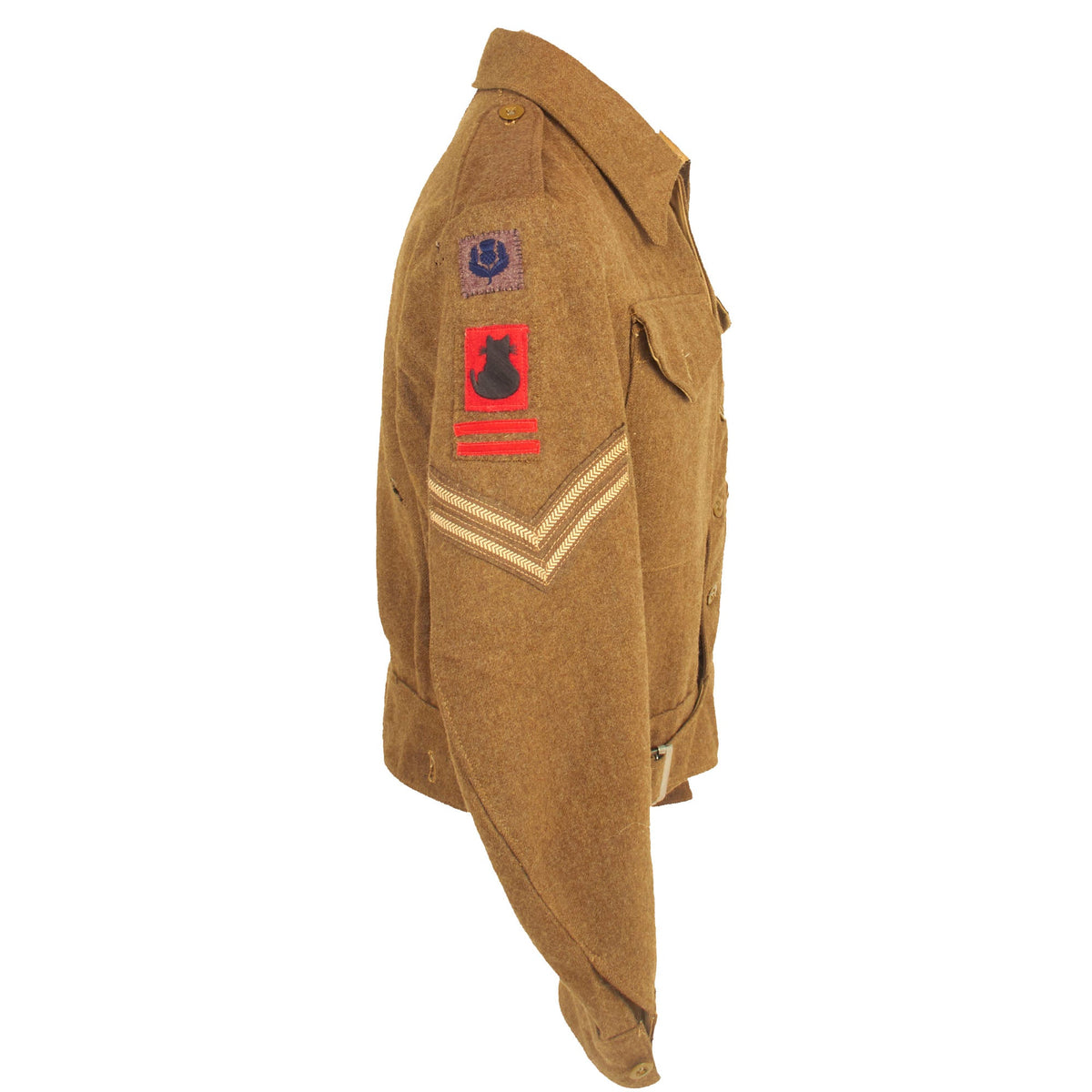Original British WWII Era 56th London Infantry Division Battledress Uniform Tunic With Period Applied Insignia Original Items
$ 295,00 $ 118,00
Original Item: Only One Available. Now this is a lovely, near unissued condition example of a British Battledress uniform top. The uniform itself bears lovely, period applied insignia for the 56th London Division. Battledress (BD), later named the No. 5 Uniform, was the combat uniform worn by British Commonwealth and Imperial forces through the Second World War. This jacket is dated 1946.
Battledress was introduced into the British Army just before the start of the war and worn until the 1960s. Other nations introduced their own variants of battledress during the war, including Australia, Canada, India, New Zealand, South Africa, and the United States and after the Second World War, including Argentina, Belgium, Norway, the Netherlands, and Greece.
It was worn mostly but not exclusively in temperate climates. In some armies it continued in use into the 1970s. During the Second World War and thereafter this uniform was also used for formal parades (including mounting the guard at Buckingham Palace) until the re-introduction of separate parade uniforms in the late 1950s.
The uniform itself is dated 1946 and still has a complete label on the interior. The uniform, though dated 1946, is identical to the earlier wartime uniform and would fit into your WWII displays without fault.
Comes ready for display.
Approximate Measurements:
Collar to shoulder: 9.5″
Shoulder to sleeve: 25.5”
Shoulder to shoulder: 17.5”
Chest width: 23″
Waist width: 18.5″
Hip width: 18.5″
Front length: 23.5″
1st (London) Motor Division mobilized at the outbreak of the Second World War in September 1939. It was reorganized as an infantry division in June 1940 and renamed the 56th (London) Infantry Division on 18 November 1940. The divisional insignia during the Second World War was changed to an outline of a black cat in a red background. The cat stood for Dick Whittington’s cat, a symbol of London.
The division remained in the United Kingdom during the Battle of France, moving to the Middle East in November 1942, where it served in Iraq and Palestine, until moving to Egypt in March 1943 and thence forward to Libya and the front, in April. This involved the division, commanded by Major-General Eric Miles, travelling some 2,300 miles (3,700 km) by road, a notable achievement and testament to the organization of the division and the ability of its mechanics and technicians. The division, minus the 168th Brigade, fought in the final stages of the Tunisian Campaign, where it suffered heavy casualties facing the German 90th Light Infantry Division, including its GOC, Major-General Miles, who had been in command since October 1941. He was replaced by Major-General Douglas Graham.
The division sat out the Allied invasion of Sicily and moved to Italy in September 1943, where they fought in the landings at Salerno under the command of the British X Corps. During this time the 201st Guards Brigade joined the division, to replace the 168th Brigade which returned to the division in October, although the 201st remained attached until January 1944. The 56th Division then crossed the Volturno Line in October and took part in the fighting around the Bernhardt Line. In January 1944, the 56th Division, now commanded by Major-General Gerald Templer, saw service in the Battle of Monte Cassino, serving there until February 1944 and participated in the Anzio campaign until relieved in March.
After being withdrawn to Egypt at the end of March, the division, under Major-General John Whitfield, returned to Italy in July 1944, where it took part in the Battles along the Gothic Line and remained there until after Victory in Europe Day. During the fighting of 1944 and 1945, some of the infantry battalions that suffered heavy casualties were disbanded, to make up for an acute manpower shortage. The division also took part in Operation Grapeshot, the Allied offensive which ended the war in Italy.
After crossing the Volturno in October 1943, the division entered the town of Calvi Vecchia. Their attempts to radio the Fifth Army to cancel a planned bombing on the town failed. As a last resort, the 56th released an American homing pigeon, named G.I. Joe, which carried a message that reached the allies just as the planes were being warmed up. The attack was called off and the town was saved from the planned air assault.
Fast Shipping with Professional Packaging
Thanks to our longstanding association with UPS FedEx DHL, and other major international carriers, we are able to provide a range of shipping options. Our warehouse staff is expertly trained and will wrap your products according to our exact and precise specifications. Prior to shipping, your goods will be thoroughly examined and securely secured. We ship to thousands clients each day across multiple countries. This shows how we're dedicated to be the largest retailer on the internet. Warehouses and distribution centres can be located throughout Europe as well as the USA.
Note: Orders with more than one item will be assigned a processing date depending on the item.
Before shipping before shipping, we'll conduct a thorough inspection of the items you have ordered. Today, the majority of orders will be delivered within 48 hours. The delivery time will be between 3-7 days.
Returns
The stock is dynamic and we cannot completely manage it because multiple stakeholders are involved, including our factory and warehouse. So the actual stock may alter at any time. It's possible that you may not receive your order once the order has been made.
Our policy is valid for a period of 30 days. If you don't receive the product within 30 days, we are not able to issue a refund or an exchange.
You can only return an item if it is unused and in the same state as the day you received it. You must have the item in its original packaging.
Related products
Uncategorized
Uncategorized
Australian WWII Owen MK1 Machine Carbine SMG Custom Fabricated Replica with Sling Original Items
Uncategorized
Uncategorized
Uncategorized
Uncategorized
Uncategorized
Uncategorized
Armored Burgonet Helmet & Polearm from Scottish Castle Leith Hall Circa 1700 Original Items
Uncategorized
Uncategorized
Uncategorized
Uncategorized
Angolan Rebel 1970s era 60mm Inert Display Mortar from Angolan Civil War Original Items
Uncategorized
Uncategorized
Uncategorized
Band of Brothers ORIGINAL GERMAN WWII Le. F.H. 18 10.5cm ARTILLERY PIECE Original Items
Uncategorized
Armoured Fighting Vehicles of the World: AFVs of World War One (Hardcover Book) New Made Items
Uncategorized
